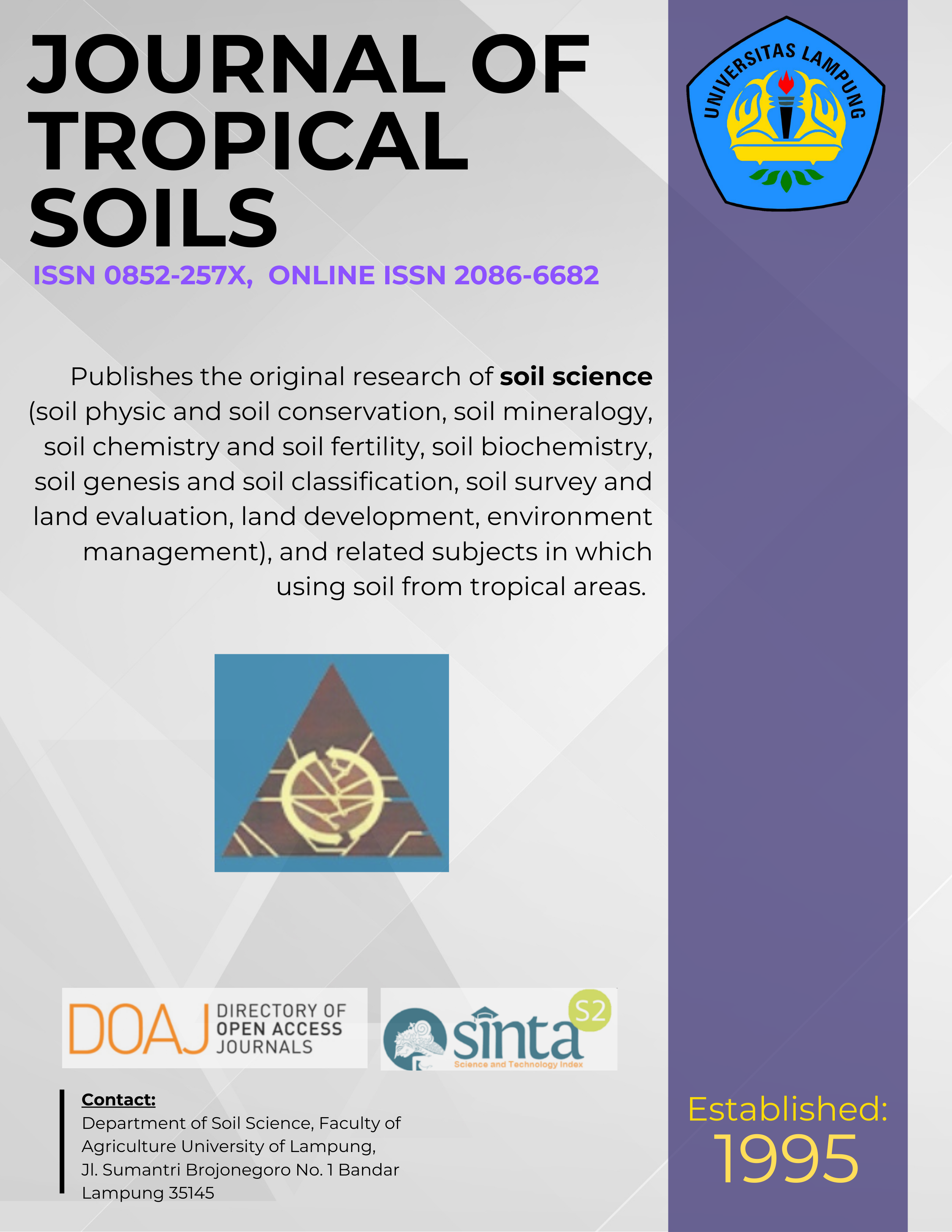Land Use Planning of Way Betung Watershed for Sustainable Water Resources Development of Bandar Lampung City
Main Article Content
Abstract
Way Betung watershed is one of the important water resources in Lampung Province and it provides a clean water for Bandar Lampung City through a regional water supply company (PDAM). By the increase of population and economical activities of Bandar Lampung City, the need of clean water also increase, however by the time, the conditions of Way Betung watershed as water resources are declining. Therefore, to improve or to restore Way
Betung watershed, a high cost is needed. The research was aimed: (a) to study the effects of Way Betung watershed land use change on the water resources of Bandar Lampung City, (b) to arrange the sustainable development of Way Betung watershed in order to maintain the availability of water resources. The sustainable developments of water resources of Way Betung watershed were arranged in five alternatives/scenarios and each alternative was related to
its erosion (USLE method) and its run off volume (SCS method). The results showed that land use changes of Way Betung watershed (1991-2006) were likely to increase daily maximum discharge (Q max), to decrease daily minimum discharge (Q min), to increase fluctuation of river discharge, and to increase yearly run off coeffcient. The best sustainable development of water resources of Way Betung watershed, Lampung Province, was alternative/scenario-4 (forest as 30% of watershed areas + alley cropping in the mix garden). This alternative will decrease erosion to the level lower than tolerable soil loss and also decrease fluctuation of monthly run off.
Keywords: Land use change, run off coefficient, water resources, watershed
Downloads
Article Details
Section
License for Authors
Authors who publish with this journal agree to the following terms:
- Authors retain copyright and grant the journal right of first publication with the work simultaneously licensed under a Creative Commons Attribution License that allows others to share the work with an acknowledgement of the work's authorship and initial publication in this journal.
- Authors are able to enter into separate, additional contractual arrangements for the non-exclusive distribution of the journal's published version of the work (e.g., post it to an institutional repository or publish it in a book), with an acknowledgement of its initial publication in this journal.
- Authors are permitted and encouraged to post their work online (e.g., in institutional repositories or on their website) prior to and during the submission process, as it can lead to productive exchanges, as well as earlier and greater citation of published work (See The Effect of Open Access).
License for Regular Users
Other regular users who want to cite, distribute, remix, tweak, and build upon author’s works, even for commercial purposes, should acknowledge the work’s authorship and initial publication in this journal, licensed under a Creative Commons Attribution License.

